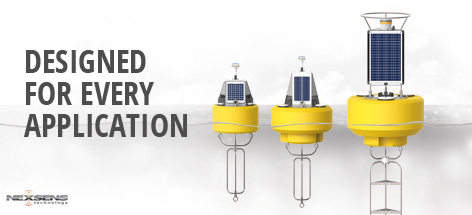Study: Lake Dredging and Other Ecological Harms
 "Dredge New York in the Kill Van Kull" by USACE HQ is marked with CC PDM 1.0.
"Dredge New York in the Kill Van Kull" by USACE HQ is marked with CC PDM 1.0.A review led by fisheries scientists in New England has found that lake dredging has had a negative impact on marine life and the health of a habitat. Specifically, mobile gear used in commercial fishing (like hydraulic clam dredges that are dragged along the bottom of waterways) are known to hurt wildlife and the environment they live in. The study also highlights that, to a lesser extent, more general dredges and trawls also damage habitats. Many styles of dredges and trawls have an adverse impact on groundfish habitats in the region’s waters when compared to non-moving gear.
The findings aren’t surprising. For several years now, non-scientific observers have stated that dragging a metal contraption across the seabed cant be good for the habitat. Beyond being just bad, lake dredging and trawling can destroy habitats if overused. Still, the study’s results help provide new information on the impacts of different types of fishing gear, which can be used to manage essential fish habitats better. Mitigating damage to natural environments when possible is in accordance with federal legislation requiring U.S. fisheries to minimize adverse impacts where possible.
Methods
“We were looking at the effect of gear on components of benthic habitat,” said Jon Grabowski, associate professor of marine science at Northeastern University and study author. “We reviewed anything we could find on gear impacts on fish habitat and habitat recovery.”
They accounted for different geological features associated with benthic habitats, like boulder and cobble piles, sand or mud, as well as creatures that live there, like mussels and anemones. Scientists relied on existing data to review the damage to more habitats outside the New England Area. Studies of hard corals, which take longer to grow than other creatures, weren’t included in the analysis because they are managed separately from essential fish habitats.
Researchers assigned scores on the susceptibility of habitat types to a different gear. The six most common commercial fishing gear types that contact seabeds in the New England region were considered, including trawls, scallop dredges, gillnets, longlines, traps and hydraulic clam dredges.
Recovering From Lake Dredging and Trawling
“For scallop dredging and trawling in mud, sand, the recovery times are relatively quick. In high-energy systems such as on Georges Bank, granule-pebble habitat also recovers quickly,” said Grabowski. But areas with rocky, cobble-boulder habitats take longer to bounce back than those covered by mostly sand and mud.
Grabowski and other researchers used their findings to identify hotspots of vulnerability to different types of fishing gear in New England waters. The approach used by researchers can be applied to chart hotspots in other waters around the country.
Hopefully, by sharing hotspot locations with commercial fishers, they can adjust their catching practices. So for an area with a habitat most vulnerable to trawling, a gillnet could be used instead. Or, perhaps the region could be closed for fishing, Grabowski says. Unfortunately, achieving such bans would be difficult.
“If they’re on a quota, they (fishermen) will keep fishing till they hit their quota,” said Grabowski. “Or, hopefully, they could catch their fish quickly and get out quickly, and ultimately catch the same number of fish but have a smaller impact on the bottom.”
The findings may also help encourage the development of new types of fishing gear that are not as disruptive to groundfish habitat as those in use today. For instance, a trawl that is raised off the bottom. Grabowski would like to work them into models that fisheries managers can use to reduce fish habitat vulnerability nationwide.
“The assessment we did is a framework that can be applied elsewhere,” said Grabowski. “Obviously, it’s important to include an understanding of the local habitats, but impacts from different gears, scoring on vulnerability, all of those things are applicable in other areas.”
Not All Bad
It is important to note that dredging and trawling equipment can be bad for the environment in circumstances of overfishing, but dredging can also be used in conservation efforts. Some lakes have a build-up of toxic or otherwise harmful sentiment on top of the lakebed. The build-up of sediment on the bottom of lakes is challenging to solve, but in some cases, dredging equipment has been used to remove harmful materials and followed later by a new and safe sediment cap. Dredging being used for conservation is an important use of the gear because few methods can achieve the same upheaval that dredging does.



Pingback: FishSens Magazine | Australia's Sub-Par Ban on Super Trawling - FishSens Magazine
Pingback: FishSens Magazine | Restoring Buffalo Reef in Lake Michigan - FishSens Magazine
Pingback: FishSens Magazine | Fishing in Onondaga Lake - FishSens Magazine
Pingback: Environmental Monitor | Protecting Endangered Species: Why Freshwater Mussels Matter - News